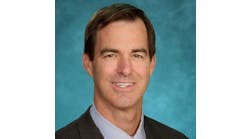Report From NAACOS Fall Conference: Transforming Primary Care to Deliver Value at Mount Sinai
On Sept. 26, at the Fall Conference of the National Association of ACOS (NAACOS) in Washington, D.C., population health leaders from Mount Sinai Health System in New York described their efforts to transform primary care for value-based care, despite the fact that 50 percent of patient attribution in its value-based contracts lie with physicians who are not employees and who are using 70 different EHRs.
Mount Sinai has more than 300 community care locations throughout the New York metro area and has launched a clinically integrated network of hospitals and about 3,200 physicians. It has value-based contracts with all commercial health plans and full risk-based contracts for Medicare/Medicaid lives.
The health system is working to shift physician compensation to an outcomes-based model and has invested $100 million in IT and services to enable care teams to manage populations. That effort involves standardizing and improving care processes for chronic illness and specialty care, said Meena Bansal, M.D., who serves as the chief medical officer of Mount Sinai Care LLC and deputy chief medical officer for Mount Sinai Health Partners, the population health platform for the entire Mount Sinai Health System.
Mount Sinai is using a clinical informatics and panel management platform from Lumeris to analyze quality data using medical and pharmacy claims and EHR data, Bansal said. ADT feeds give clinicians real-time alerts for hospital discharges and ED visits. “That helps us close care gaps that cannot be closed by claims,” she said. The platform also allows them to do panel management for stratifying patients at high risk for utilization of ED and hospital services. They are also layering on a focus on social determinants of health to understand which patients would most likely be impacted by outreach, and whether it would make more sense for a social worker or a nurse to be the first point of contact. The health system also has begun leveraging a community paramedicine program for ED/admission diversion.
Mount Sinai also has created some novel ways to engage physicians by creating “pods” of practices with similar payer mixes and facing similar barriers. The organization is using provider engagement managers to work at the pod level to help the practices with transformation and to go to bat for them if they have issues with payers, Bansal said.
Another significant development is embedding pharmacists into primary care. Ruchi Tiwari, PharmD, director of pharmacy at Mount Sinai Health Partners, has developed system-wide ambulatory clinical pharmacy services and initiated a focus on primary care team-based models with clinical pharmacists.
Tiwari said MSHP realized expertise in medication management was lacking and identified it as a critical gap in its ability to manage patients’ chronic diseases and lower total cost of care. They chose to begin adding pharmacists to practices with large concentration of patients with uncontrolled chronic disease and associated complications and a large Medicare/Medicaid patient mix.
The pharmacists support team-based care by managing the drug-disease related goals for patients. With the support of analytics and population insights, pharmacists are able to hotspot and optimize therapeutic goals and related issues, Tiwari said. Mount Sinai has started having pharmacists conduct Medicare Annual Wellness Visits. “The pharmacists understand that in primary care they have to be part of the team,” she said. “They started to see that doing the wellness visits allowed them to better engage with patients and uncover new opportunities for care management.
Rob Fields, M.D., senior vice president and chief medical officer for population health at Mount Sinai, previously served as medical director of the Mission Health Partners ACO in western North Carolina. He said that as Mount Sinai faces the problem often described as one foot in the value-based care boat and one foot on the fee-for-service dock, it is interested in making “no-regret investments” that make sense in both environments. “We are experimenting with things you would do in both camps, including improving data infrastructure and embedding more resources into practices,” he said. “It’s never wrong to have a culture of continuous improvement and team-based care.”
Fields spoke about working to increase the ratio of medical assistants to physicians in primary care practices to take some administrative burden off physicians and allow them to see more patients. If a physician can see two more patients per day, he said, it can help cost-justify adding a medical assistant to handle other tasks. But he stressed that it is not just about hiring new M.A.’s; it requires new policies and procedures and ongoing training for the medical assistants to make it work well.


